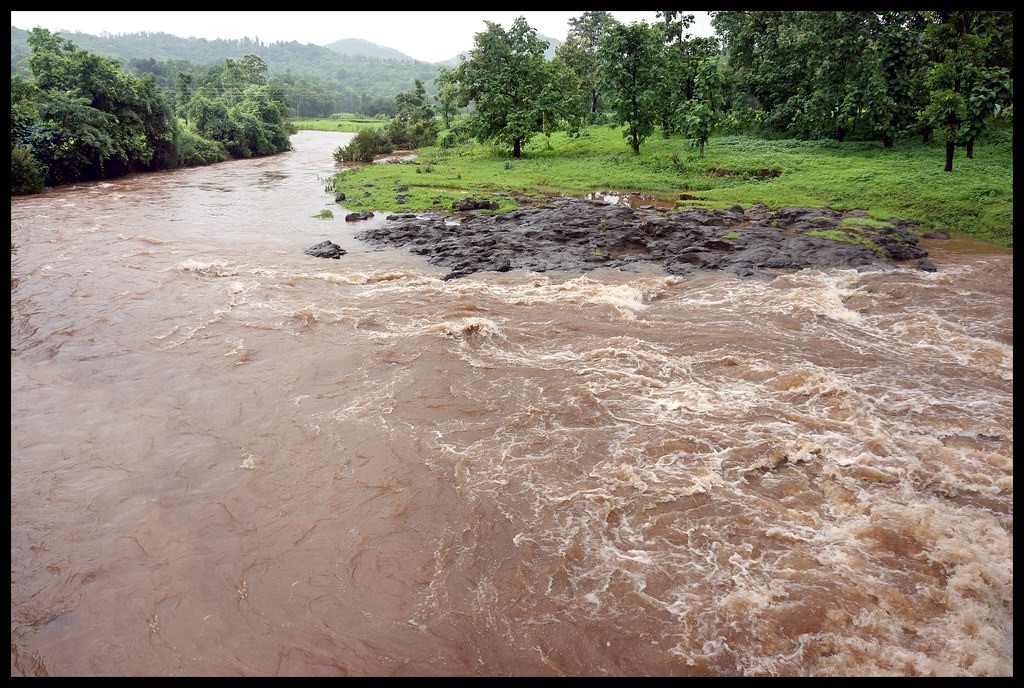Description

Disclaimer: Copyright infringement not intended.
Context: Bull shark that attacked fisherman was first sighting in Vaitarna river.
Details
Vaitarna River
- The river Vaitarna is one of the west flowing rivers in the region North of Mumbai and South of the Tapi River.
- The headstreams of the Vaitarna rise on the southern slopes of the Triambak-Anjaneri range and combine into three southward flowing streams which unite to form the Vaitarna a little north of Dapure.
- The Vaitarna from here has a very winding course southwards and goes round Zarwad (Jarwar) Budruk. Due south of it, the river is joined by its tributary Alvand nadi, whose headstreams rise in the same Triambak Anjaneri range on the southern slopes of the Bhaskargad, Phani dongar and Harish dongar, which form the divide between these and those of the Val river flowing northwards.
- After the confluence with the Alvand river, the Vaitarna turns and flows nearly straight in a south-south-west direction cutting a deep gorge in the scarp of the
- A small tributary from the northwest to south-east in a gorge continues the course of the Vaitarna in a remarkably deeply cut valley.
- The main tributaries of Vaitarna river are Pinjal, Ganjai, Surya, Daharji, Tansa.
- The catchment area of Vaitarna basin completely lies in Thane and Nasik districts of Maharashtra.
- The Vaitarna drains an area of 2019 sq km before it falls in Gulf of Khambhat.
- There is only one hydrological observation site of CWC on Vaitarna river at Durvesh which is situated at the upstream of confluence of Surya and Tansa tributaries.
- Accordingly to Koeppan’s Scheme, the climate of the basin is classified as AWTropical Savannah, as most of the peninsular plateau, south of Tropic of Cancer is classified.
Vaitarna hydropower project
- Vaitarna hydropower project is located near Vaitarna and Alwandi masonry and earthen dam on Vaitarna and Alwandi Rivers, in Nashik District, Maharashtra.
- The power house has a unit of 60 MW.

Bull shark
- Bull shark species of large predatory shark found in shallow coastal lagoons, estuaries, and harbours in tropical and subtropical oceans and seas worldwide.
- The bull shark is one of only a few shark species also capable of living and breeding in freshwater environments.
- Bull sharks have a unique ability to tolerate freshwater and saltwater habitats, meaning they can sometimes be found venturing into rivers and travelling great distances upstream.
- It reproduces through viviparity, the process in which the embryo develops within the mother’s body, leading to live birth.
- Bull sharks are classified as a vulnerable species by the International Union for Conservation of Nature and Natural Resources (IUCN).
|
PRACTICE QUESTION
What is the IUCN conservation status of Bull shark?
- Extinct in Wild
- Least Concern
- Vulnerable
- Near Threatened
Answer C
|











